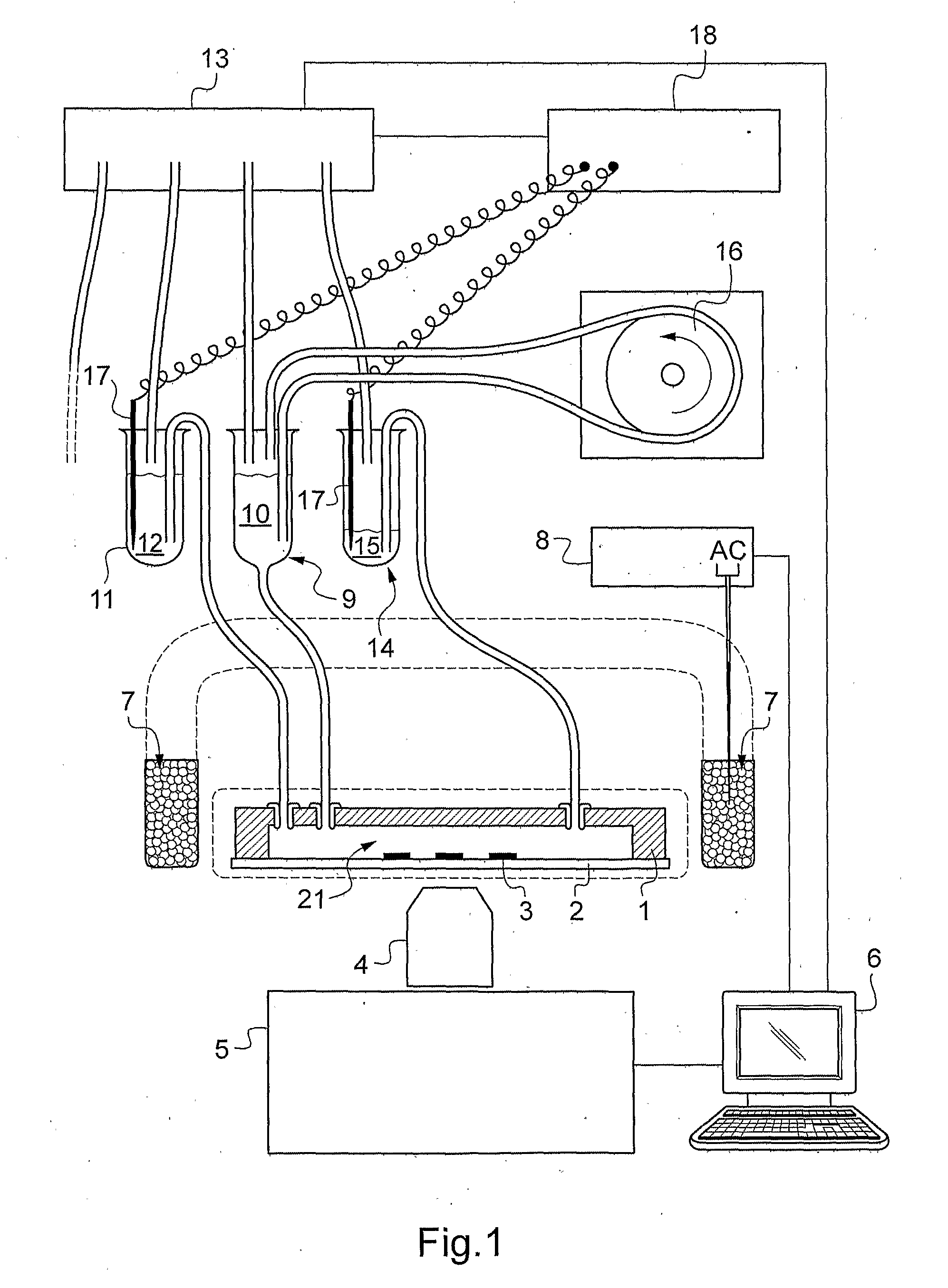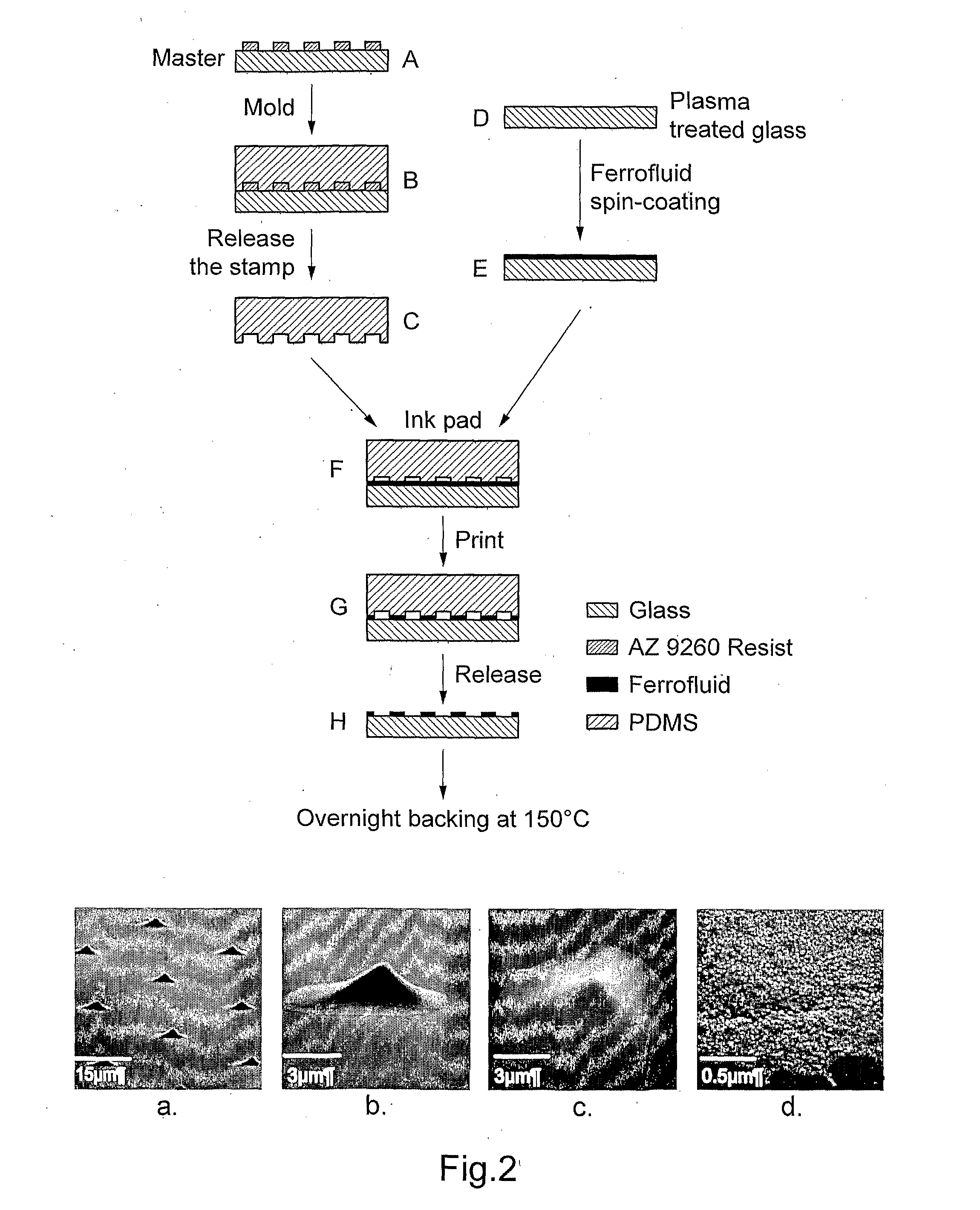Cell sorting device
a cell sorting and cell technology, applied in the field of cell sorting devices, can solve the problems of difficult challenge, relapse still exist, and limitations of progress, such as the search of molecular biomarkers in tumours
- Summary
- Abstract
- Description
- Claims
- Application Information
AI Technical Summary
Benefits of technology
Problems solved by technology
Method used
Image
Examples
first embodiment
[0374]A first embodiment, schematically represented in FIG. 9A, consists in “sandwiching” at least one microfluidic chip 1 comprising the active zone(s) between two parallel flat magnets 30 and 31, with North and South poles facing each other. Preferably, the smallest dimension of the magnets, in the plane of the chip, is larger than at least 3 times, preferably 5 times, the largest dimension of the chip 1. A translator 33 allows to increase the gap between the magnets 30 and 31 in order to reduce the field while keeping it essentially perpendicular to the chip 1 and uniform, in the central zone of the magnets. Optionally, at their wider spacing the magnets can be “docked” in a magnetic shunt 34, in order to reduce the magnetic field to about 0. Optionally, at least one of the magnets may comprise in addition one or several hole(s) 35 for tubings towards the chip 1.
[0375]This embodiment may also be particularly interesting for high throughput applications. In such applications, seve...
second embodiment
[0376]A second embodiment, that may be preferred if one wants to observe the active zone(s) by an optical means in the presence of the field, is represented in FIG. 9 B. In that case, the chip is placed at the center 40 of a series of several magnets 41 with parallel polarizations in a circular arrangement, and the magnets are moved radially in order to increase or decrease the field. Optionally, in their most distant position, the magnets 41 can be docked in individual or collective magnetic shunts. FIGS. 10 A and 10B represent the computer assisted design of the magnets and their shunts in 3 D (upper left) and top view with magnetic field in false colours (upper right) and the COMSOL simulation of the field along a vertical central axis (lower left) and along a diameter (lower right) One can note in particular that for FIG. 10 A, the field is about 0.1 Tesla and reasonably uniform on one half of the distance between magnets, whereas in FIG. 10 B it is essentially zero.
10 / Examples...
PUM
| Property | Measurement | Unit |
|---|---|---|
| thickness | aaaaa | aaaaa |
| thickness | aaaaa | aaaaa |
| thickness | aaaaa | aaaaa |
Abstract
Description
Claims
Application Information
 Login to View More
Login to View More - R&D
- Intellectual Property
- Life Sciences
- Materials
- Tech Scout
- Unparalleled Data Quality
- Higher Quality Content
- 60% Fewer Hallucinations
Browse by: Latest US Patents, China's latest patents, Technical Efficacy Thesaurus, Application Domain, Technology Topic, Popular Technical Reports.
© 2025 PatSnap. All rights reserved.Legal|Privacy policy|Modern Slavery Act Transparency Statement|Sitemap|About US| Contact US: help@patsnap.com



